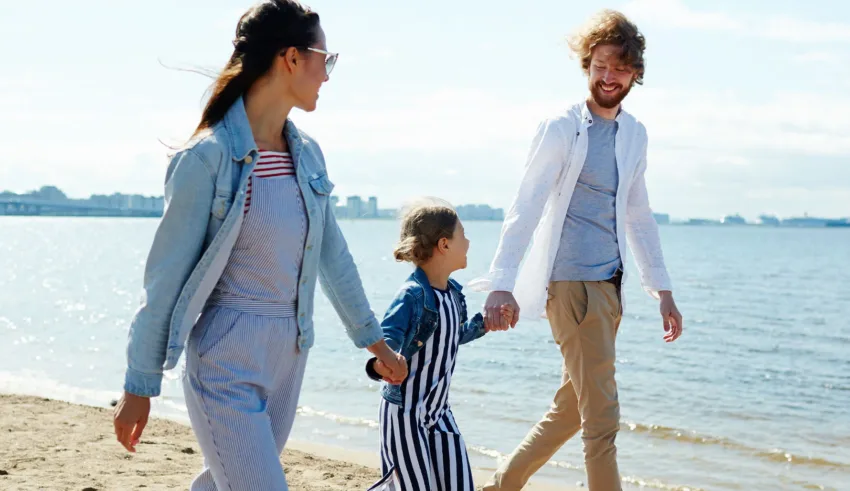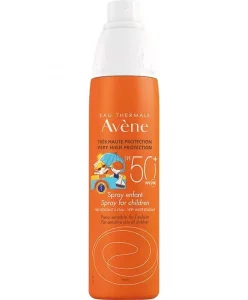
Getting the whole family ready for an outdoor outing is a feat in itself, as you have to make sure everyone dresses properly, prepare the car, make sure to bring snacks, and the list goes on. And while it’s important to make sure everything is ready for your family’s outdoor trip, don’t forget the sun protection tips either!
Today, we’re going to review with the dermatologist Dr. Shaimaa Medhat 8 simple ways to explain the sun UV protection tips every teenager and child should know.
What are the dangers of the sun for children and teenagers?
According to Dr. Shaimaa Medhat, the main risks associated with sun exposure for children and teenagers are sunburn, skin and eye damage, and skin cancer. She adds that many factors are involved in the development of skin cancers, but exposure to ultraviolet (UV) radiation is the most modifiable. Cumulative UV exposure throughout life can result from poor sun protection during childhood and adolescence. That’s why it’s so important to model good sun protection habits, as children learn by observing the behavior of their parents and caregivers.
How can we teach children about sun safety?
Teaching children to protect themselves from the sun from an early age will help them maintain healthy skin throughout their lives. Here are eight ways to help children understand the importance of sun protection.
- Use child-friendly analogies to talk about sun protection
Make sure to use playful, child-friendly analogies when discussing sun protection with your children. Remember that you can’t see sunscreen once it’s applied, which can be difficult for children to understand. Try comparing sunscreen to a shield. Or make an analogy with using toothpaste or washing your hands – both actions protect your body, even if you can’t see cavities forming or germs spreading.
- Give them a sun protection challenge
Make sun protection fun by playing with them, for example by offering them a sun cream challenge. Can they identify the SPF number on the sunscreen bottle?
You can explain to older children that SPF (sun protection factor) measures how long they’ll be exposed to the sun until they get a sunburn.
Can they predict how long they’ll need to reapply sunscreen on this outing?
Sun exposure differs from one situation to another. The time between sunscreen applications varies according to cloud cover, the amount of shade available, and the time of day. Get them involved and help them learn about sunscreen and its importance.
- Keep sun safety tips for children light
Don’t be alarmist about the dangers of sunburn, skin cancer, and premature aging, as this may frighten children. Aside from sunburn, younger children may not be able to understand the impact of these problems on them. On the other hand, teens will begin to understand the concept of skin aging and skin cancer. Consider a thoughtful talk about the link between the sun, skin cancers, and aging.
- Explain that the time of day is important
Yes, daily sunscreen use is essential to skin health, but it’s also a good idea to explain how the risk of sun damage changes throughout the day! Note that UV rays are strongest between 10 a.m. and 4 p.m., and get children into the habit of applying sunscreen before going out to play during this period.
The shadow game is a fun way to teach your children this lesson. If their shadow is short, it means the sun is higher up (and therefore more powerful). Suggest they find a shady spot to play. When the sun goes down, they can enlarge their play area.
- Show them how to apply sun protection
Sun protection isn’t as effective if it’s misapplied. Make sure your child knows to reapply the product every two hours, or after swimming or sweating. This also applies to water-resistant sunscreens! It’s a good idea for your child to get into the habit of coming to you for reapplication after activities where their skin gets wet. Older children can reapply on their own, but a reminder never hurts!
Simplify sun protection by buying products that are easy to apply. Sunscreen sticks are very practical and perfect for applying to the face, ears, and shoulders. Have your children practice applying two coats of sunscreen stick to exposed areas and working the product into the skin. Young children may need help applying spray sunscreens (remember, they still need to be worked into the skin for even coverage). Even when children grow up and start applying sunscreen themselves, make sure they use enough products to be effective.
- Advise your child to avoid tanning
When your child reaches adolescence, don’t be surprised if he starts talking about his desire to have sun-kissed, tanned skin. It’s common! Take this opportunity to teach your child that there’s no such thing as a “healthy tan”, and that any burning or tanning of the skin is in fact a sign of skin deterioration.
Tanning beds are particularly dangerous for teenagers (and anyone under the age of 35), as they increase the risk of developing melanoma by almost 60%.
- Practice what you preach
You can talk about sun UV protection all day long, but if you don’t model good UV defense yourself, chances are your lessons will fall on deaf ears. Show your children that you apply sunscreen every morning and that you don’t expose yourself directly to the sun during the hottest hours of the day.
- Get the school involved
You don’t have to be the only advocate for sun protection in your children’s lives. Talk to their teachers about sun protection. Make sure they practice and reinforce sun protection habits at school. You can even introduce them to sun protection education programs that make sun protection more appealing to kids.
What role does vitamin D play in sun protection for children and adolescents?
Dr. Shaimaa Medhat points out that one of the benefits of sunlight on human skin is the production of vitamin D. Unfortunately, the ultraviolet rays that stimulate vitamin D production (UVB rays) are the same ones that cause sunburn and skin cancer.
She adds that foods such as eggs, butter, salmon, and herring are good sources of vitamin D. But unlike other vitamins, vitamin D is also manufactured by your child’s body, with the help of the sun’s ultraviolet rays. When your child is exposed to sunlight, it helps his or her body synthesize vitamin D in the skin. There’s no need to spend a lot of time in the sun to produce sufficient quantities of vitamin D.
Our sun protection choice for children’s sensitive skin:
Eau Thermale Avène Sunscreen Spray for Children SPF 50+
Don’t forget to cover up when gardening or spending time outdoors, and reapply sunscreen if necessary. After a while, your sun protection habits will rub off on your children. And your healthy, youthful skin will show them why it’s so important to start young!
Last Updated on April 26, 2024









